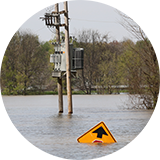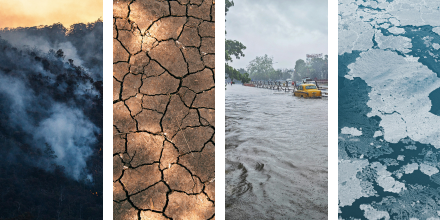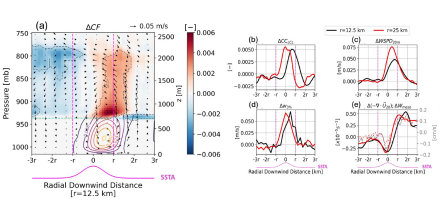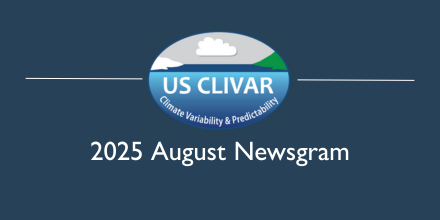Who We Are
US CLIVAR is a national research program with a mission to foster understanding and prediction of climate variability and change on intraseasonal-to-centennial timescales, through observations and modeling with emphasis on the role of the ocean and its interaction with other elements of the Earth system, and to serve the climate community and society through the coordination and facilitation of research on outstanding climate questions.
Our Research
The ocean plays a key role in providing a major long-term "memory" for the climate system, generating or enhancing variability on a range of climatic timescales. Understanding the ocean's role in climate variability is therefore crucial for quantifying and harnessing the predictability inherent to the Earth system. US CLIVAR-led research has played a substantial role in advancing understanding of, and skill in predicting climate variability and change.
Science and Research Challenges

Subseasonal-to-
Seasonal Prediction

Decadal Variability
and Predictability

Climate Change

Climate and Extreme
Events

Polar Climate Changes

Climate and Marine
Carbon/Biogeochemistry

Climate at the Coasts
Announcements

Pathways Connecting Climate Changes to the Deep Ocean Workshop Report is Published
The joint OCB/ US CLIVAR workshop explores methods for observing and modeling fast and slow pathways connecting the ocean surface to the deep seas.

Usable Climate Risk Science Webinar Series
Hosted by the US CLIVAR Working Group on Accelerating Research on the Scientific Foundations of Regional Climate Risk Information, this webinar series explores the growing demand for actionable information on climate hazards and risks.

Small SST warm anomalies in Tropical Atlantic locally increase trade cumulus formation
Chen et al. (2025) employs large-eddy simulations to demonstrate how small-scale SST variations can increase trade cumulus cloud formation.

August Newsgram is Available
Stay informed with the latest news, research highlights, webinars, data sets, meetings, funding, career opportunities, and jobs for the climate science community.
Upcoming Webinars
Usable Climate Risk Science Webinar Series
Bob Kopp, Rutgers University
Dan Kirk-Davidoff, Electric Power Research Institute, Inc.
Join us for the second webinar in a new series, Usable Climate Risk Science, hosted by the US CLIVAR Working Group on Accelerating Research on the Scientific Foundations of Regional Climate Risk Information.
